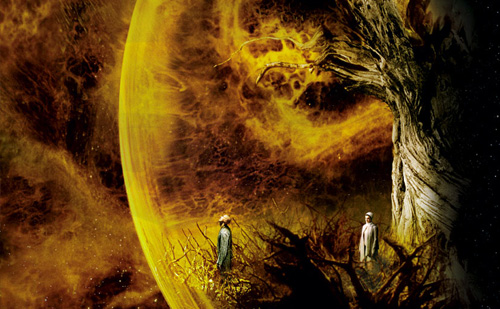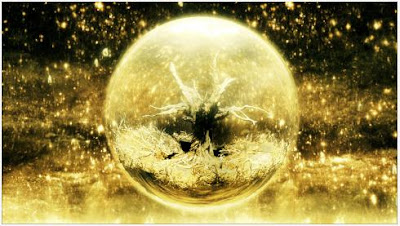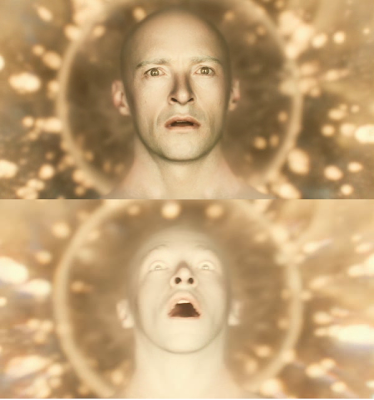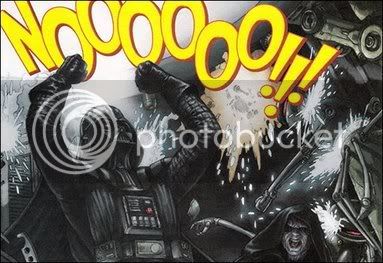- Joined
- Aug 7, 2008
- Messages
- 68
- Reaction score
- 0
Is death a door to the road to awe? Or is it a disease for which there is a cure?

Too busy to take a couple of hours to explore your mind's take on this subject by exposing it to Aronofsky's vision?
This particular work of art is a beautiful and powerful meditation on mortality. It's closest kinship is with What Dreams May Come.
Reflections and meditations on what may come after death are by definition uncertain imagination. No one has returned to tell us with certainty what comes next. Even the religious require faith.
<object width="425" height="344"><param name="movie" value="https://www.youtube.com/v/7YWRXKeBSiE&hl=en&fs=1"></param><param name="allowFullScreen" value="true"></param><embed src="https://www.youtube.com/v/7YWRXKeBSiE&hl=en&fs=1" type="application/x-shockwave-flash" allowfullscreen="true" width="425" height="344"></embed></object>
in the garden there was the tree of life, and tree of life and death...good and evil, light and dark. It the was the knowledge of good and evil which would make man like God. hence the god of freemasonry jah (good) baal (evil) on (the king or person controlling both good and evil becoming a god) man was created to eat of the tree of life but always had freewill to eat of the forbidden knowledge, knowledge of good and evil.
The movie has heavy Kabbalistic references and Aaronofsky, its director, also directed Pi -- another movie with heavy kabbalistic references but this time dealing with the number of God and the Fibonacci sequence.
I'm writing this in the midst of my fifth viewing of the DVD. Those who brought this movie to light have spent 15 years at it and there is plenty here to ponder. I find it exquisite visually and fascinating spiritually. Then again the eternal question of life after death or eternal life interests me.
I would love to personally thak the makers of this film for their effort and dedication in bring their vision to the screen. These are highly intelligent cinema artists who's effort is to be commended.

It's ambitious and amazing and well worth the time to watch and the money to own. I'm certain that I will watch it often along with What Dreams May Come, Flatliners, Meet Joe Black, Stay, Jacob's Ladder, The Jacket, Contact, Ghost, The Last Temptation of Christ, Faraway So Close, Defending Your Life, Heaven Can Wait, Wings of Desire, the Rapture, City of Angels, The Sixth Sense, and Beetlejuice when I wish to consider my own mind's eye view of what comes after death.
I'm curious about death and the hereafter and how other's see it and this is one of the best and most beautiful films ever made to address the subject.
Once you realize it's not about love- it's not a love story- you might grasp it a bit more.
That may be the framework but this story is a death story.
The lead character is not consumed with love.. there is no drawn out romantic idealization that pulls on the very core of your heart and makes you oo and aa at the show of acted emotional interplay.
He is consumed with death, her death, leaving himself blind to their love.
He wants to stop death, but the story is a lesson in the beauty and tranquility of death.. how human beings efforts to thwart it are born out of the skewed perceptive that death is something that -needs- to be stopped.
This movie is visually unique, but that takes a secondary seat to its presentation of a higher consciousness about -death-.
Amazing.
As comedian Bill Hicks used to say: "We are all one consciousness experiencing itself subjectively. There is no such thing as death, life is but a dream and we are the imaginations of ourselves."


Too busy to take a couple of hours to explore your mind's take on this subject by exposing it to Aronofsky's vision?
This particular work of art is a beautiful and powerful meditation on mortality. It's closest kinship is with What Dreams May Come.
Reflections and meditations on what may come after death are by definition uncertain imagination. No one has returned to tell us with certainty what comes next. Even the religious require faith.
<object width="425" height="344"><param name="movie" value="https://www.youtube.com/v/7YWRXKeBSiE&hl=en&fs=1"></param><param name="allowFullScreen" value="true"></param><embed src="https://www.youtube.com/v/7YWRXKeBSiE&hl=en&fs=1" type="application/x-shockwave-flash" allowfullscreen="true" width="425" height="344"></embed></object>
in the garden there was the tree of life, and tree of life and death...good and evil, light and dark. It the was the knowledge of good and evil which would make man like God. hence the god of freemasonry jah (good) baal (evil) on (the king or person controlling both good and evil becoming a god) man was created to eat of the tree of life but always had freewill to eat of the forbidden knowledge, knowledge of good and evil.
The movie has heavy Kabbalistic references and Aaronofsky, its director, also directed Pi -- another movie with heavy kabbalistic references but this time dealing with the number of God and the Fibonacci sequence.
I'm writing this in the midst of my fifth viewing of the DVD. Those who brought this movie to light have spent 15 years at it and there is plenty here to ponder. I find it exquisite visually and fascinating spiritually. Then again the eternal question of life after death or eternal life interests me.
I would love to personally thak the makers of this film for their effort and dedication in bring their vision to the screen. These are highly intelligent cinema artists who's effort is to be commended.

It's ambitious and amazing and well worth the time to watch and the money to own. I'm certain that I will watch it often along with What Dreams May Come, Flatliners, Meet Joe Black, Stay, Jacob's Ladder, The Jacket, Contact, Ghost, The Last Temptation of Christ, Faraway So Close, Defending Your Life, Heaven Can Wait, Wings of Desire, the Rapture, City of Angels, The Sixth Sense, and Beetlejuice when I wish to consider my own mind's eye view of what comes after death.
I'm curious about death and the hereafter and how other's see it and this is one of the best and most beautiful films ever made to address the subject.
Once you realize it's not about love- it's not a love story- you might grasp it a bit more.
That may be the framework but this story is a death story.
The lead character is not consumed with love.. there is no drawn out romantic idealization that pulls on the very core of your heart and makes you oo and aa at the show of acted emotional interplay.
He is consumed with death, her death, leaving himself blind to their love.
He wants to stop death, but the story is a lesson in the beauty and tranquility of death.. how human beings efforts to thwart it are born out of the skewed perceptive that death is something that -needs- to be stopped.
This movie is visually unique, but that takes a secondary seat to its presentation of a higher consciousness about -death-.
Amazing.
"There was so much work done on the film by me, Mattie and James and Clint, just sitting around and talking about how different things connect. It’s hard to find the sources of everything, but I can track some of them.
One thing is there’s this whole geometrical thing going through the film. There’s that triangle that you see in space that we keep going back to, with the star in the middle, and that’s actually the Orion Nebula, which is what the Mayans actually thought was their underworld. That was what they pointed at. And, most people see the Orion Belt, the three stars they know, but then surrounding the Orion Nebula is this triangle. So, then we started saying, Well, you know, the Mayans, they had these triangular pyramids, and in Spain, they had these triangular towers. It makes sense to use the triangle for the 16th century.
And then, you come to the 21st century, and you’re, like, well, what’s our world? You realize our world is computer screens and doors and windows. It’s all squares, you know, the shape’s evolving.
Okay, so then we’re in space. What’s the next shape? Well, it’s very obvious--the planets, circle. So, maybe the spaceship, instead of going and doing the same old thing of putting trucks in space--which is what people have done since the shaping of these old…Every rocket ship is just a really souped up, pimped up car in space. You know, hey, let’s get a spherical ship. Why not?
They all led to different things, and suddenly, a visual language starts to grow. But, it’s not really one source. It’s just being part of the world, and taking things from wherever you can."
"And, I think there is a lot of stuff in THE FOUNTAIN that is concrete that I think people will see the more they watch it. There are definitely more answers in THE FOUNTAIN than there are in “Lost.”
The whole interview is at https://www.aintitcool.com/node/3076
Hugh Jackman walks on water entraining with the Biblical Christ. Fitting as he is about to become one with consciousness atop a Mayan Temple/Pyramid.
Stargate King Hugh Jackman interacts with the Mayan 2012 Stargate themes in the modern 2001: Space Odyssey, Darren Aronofsky's masterpiece "The Fountain".
As a Spanish conquistador Hugh Jackman finds a Mayan Temple/Pyramid, climbs it, while Orion winks in the background.

The Mayan theme is represented by Xibalba and a Temple/Pyramid Jackman climbs while questing for the Tree of Life.
"The Fountain" elegantly illustrates the journey of realization of ones own divinity - frequently described in these pages as opening the Stargate - calling it "the road to awe".
The Stargate circle is constantly placed at the center of the frame throughout the entire film. Showing divinity to be present in all 'times and places'. Before the climax when the Stargate is finally opened Jackman assumes the meditative posture of the Buddha, the human pyramid. In another fractally self similar reality at the same moment he is standing atop the Mayan pyramid eating semen from the Tree of Life.
Hugh has to overcome his attachment to objects in space/things (pursuit of a cure for his wife/immortality) and its interrelated partner 'illusion' time (the rate at which things change) . Only then, purged of the desire to find or fulfill himself in anything does he become whole while the resulting ecstatic Stargate collapses form and change, time and space.

The Stargate opens for our hero who has found the joy of consciousness beyond time and space. The Stargate circle currently being a halo (image above) around the third eye pivot of consciousness in the human form.
https://rundonotwalk.blogspot.com/2008/03/following-hugh-jackman-through.html
https://thebravenewworldorder.blogspot.com/2006/12/contacting-god-our-alien-creator-occult.html
https://thebravenewworldorder.blogspot.com/2006/09/eris-nasa-madonna-pope-stargates-and.html
https://thebravenewworldorder.blogspot.com/2006/10/akhenaton-ancient-astronaut-and-911.html
As comedian Bill Hicks used to say: "We are all one consciousness experiencing itself subjectively. There is no such thing as death, life is but a dream and we are the imaginations of ourselves."






 Pretty rigid, but that sums it up for me as well.
Pretty rigid, but that sums it up for me as well.



